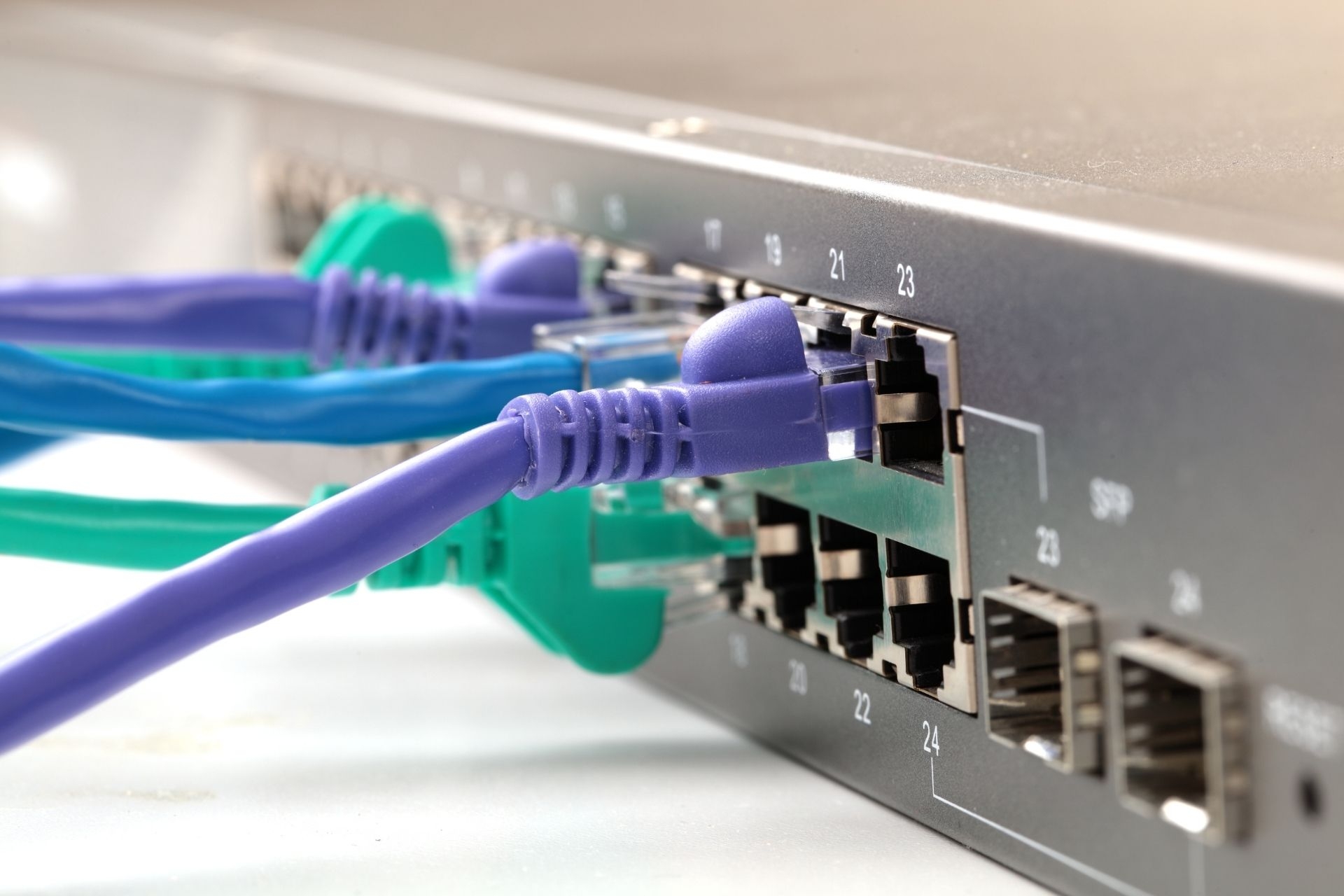

BGP routing plays a crucial role in internet traffic engineering by allowing network operators to control the flow of traffic between different autonomous systems. By manipulating BGP attributes such as AS path, local preference, and MED, operators can influence the path that traffic takes through the network. This enables them to optimize performance, reduce latency, and ensure efficient utilization of network resources.
Using MPLS for traffic engineering offers several benefits, including improved traffic prioritization, reduced network congestion, and enhanced scalability. MPLS allows for the creation of virtual paths through the network, known as label-switched paths (LSPs), which can be used to route traffic based on specific criteria such as QoS requirements or traffic engineering policies. This helps network operators to better manage and control the flow of traffic within their networks.
Connected and live within 10 working days: The Real Greek in Paradise street Liverpool has now been connected at Gigabit speeds to Baltic Broadband’s 100Gbps fibre network that circles Liverpool...
Posted by on 2024-01-22
Our team at Baltic Broadband really enjoyed working on Paramount’s eagerly awaited original drama series Sexy Beast, which has now been released! Facilitated by the Liverpool Film Office, the production...

Posted by on 2024-01-09
Baltic Broadband have today launched Liverpool City Region Data Centres (LCRDC) as a separate brand to it’s Broadband business. Previously, offering Data Centre space had been a service that has...
Posted by on 2024-01-08
For years, Escape Live struggled with poor performing broadband from the national providers. After waiting almost 2 years for them to deliver a fast and reliable product, they lost patience...

Posted by on 2024-01-03
Network operators utilize QoS mechanisms such as traffic shaping, prioritization, and queuing to optimize internet traffic flow by ensuring that critical traffic receives preferential treatment over less important traffic. By assigning different levels of priority to packets based on their characteristics, operators can guarantee that high-priority traffic, such as voice or video data, is delivered with minimal delay and jitter, while still maintaining overall network performance.

Traffic shaping and policing techniques play a vital role in internet traffic engineering by controlling the rate at which traffic is sent or received on a network. Traffic shaping helps to smooth out bursts of traffic and prevent congestion, while traffic policing enforces traffic limits and ensures that network resources are used efficiently. By implementing these techniques, network operators can improve network performance and provide a better quality of service to their users.
Content Delivery Networks (CDNs) help improve internet traffic performance and reduce latency by caching content closer to end-users, thereby reducing the distance that data needs to travel. By distributing content across a network of servers located in different geographic locations, CDNs can deliver content more quickly and efficiently, resulting in faster load times and improved user experience. This helps to alleviate congestion on the main network and reduce the strain on origin servers.

Some common challenges faced by network engineers when implementing traffic engineering solutions include balancing the competing demands of different applications and services, ensuring network stability and reliability, and managing the complexity of large-scale networks. Engineers must also consider factors such as network topology, traffic patterns, and resource constraints when designing and implementing traffic engineering solutions to ensure optimal performance and efficiency.
The use of traffic analysis tools aids in optimizing internet traffic flow and network performance by providing network operators with valuable insights into traffic patterns, bottlenecks, and performance metrics. By analyzing network traffic in real-time, operators can identify areas of congestion, optimize routing paths, and make informed decisions about network capacity planning and resource allocation. Traffic analysis tools help to improve network efficiency, enhance user experience, and ensure that network resources are used effectively.

When it comes to bulk internet data transfer, the optimal protocols to use are TCP (Transmission Control Protocol) and FTP (File Transfer Protocol). These protocols ensure reliable and efficient transfer of large amounts of data over the internet. Additionally, using protocols such as HTTP (Hypertext Transfer Protocol) or SFTP (Secure File Transfer Protocol) can also be beneficial for secure and encrypted data transfer. By utilizing these protocols, users can experience faster transfer speeds, reduced packet loss, and improved overall performance when transferring bulk data over the internet. It is important to consider the specific needs and requirements of the data transfer to determine the most suitable protocol for the task at hand.
Bulk internet providers utilize a variety of advanced techniques to mitigate DDoS attacks and ensure the stability and security of their networks. These techniques may include deploying dedicated DDoS mitigation hardware and software, such as firewalls, intrusion detection systems, and traffic scrubbing tools. Additionally, providers may implement rate limiting, access control lists, and traffic filtering to identify and block malicious traffic. Some providers also utilize cloud-based DDoS protection services to quickly scale up their defenses in the event of a large-scale attack. By continuously monitoring network traffic and analyzing patterns, bulk internet providers can proactively detect and mitigate DDoS attacks to minimize their impact on their infrastructure and customers.
When designing and architecting a bulk internet data center, it is essential to follow best practices to ensure optimal performance and efficiency. This includes considering factors such as scalability, redundancy, security, and energy efficiency. Utilizing high-density servers, virtualization technology, and cloud computing can help maximize space utilization and reduce energy consumption. Implementing a robust network infrastructure with redundant connections, firewalls, and intrusion detection systems is crucial for protecting data and ensuring uptime. Additionally, incorporating advanced cooling systems, such as liquid cooling or hot aisle/cold aisle containment, can help maintain optimal operating temperatures and reduce energy costs. Overall, a well-planned data center design that takes into account these best practices will result in a reliable and cost-effective solution for handling large volumes of internet traffic.
Bulk internet providers must consider several factors when deploying edge computing solutions. These considerations include network latency, bandwidth requirements, security protocols, scalability, and interoperability with existing infrastructure. By optimizing the placement of edge computing nodes, providers can reduce latency and improve the overall user experience. Additionally, ensuring that edge computing resources are distributed efficiently across the network can help manage bandwidth usage and prevent bottlenecks. Security measures such as encryption, access controls, and monitoring tools are essential to protect sensitive data processed at the edge. Scalability is crucial to accommodate growing demand for edge computing services, while interoperability with legacy systems ensures a seamless integration process. Overall, bulk internet providers must carefully plan and execute their edge computing deployments to meet the evolving needs of their customers and maintain a competitive edge in the market.
Bulk internet providers implement a variety of cybersecurity measures to address threats specific to large-scale data transfers. These measures may include encryption protocols, intrusion detection systems, firewalls, and network segmentation to protect against unauthorized access and data breaches. Additionally, providers may conduct regular vulnerability assessments, penetration testing, and security audits to identify and mitigate potential risks. They may also utilize threat intelligence feeds, security information and event management (SIEM) systems, and endpoint protection solutions to monitor and respond to security incidents in real-time. By employing a multi-layered approach to cybersecurity, bulk internet providers can safeguard the integrity and confidentiality of data during transit and storage.